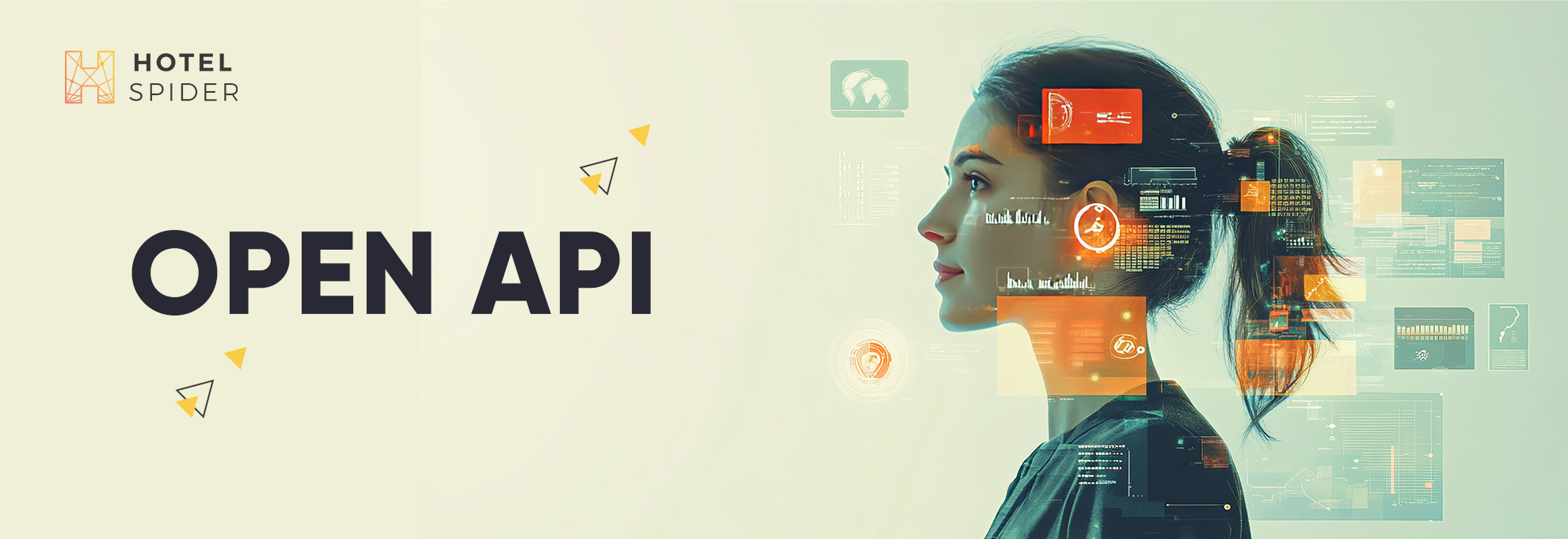
Open API – a term you've probably seen on almost every hotel technology provider's website. We turned to top experts to break down what it means, the role it plays in your tech stack, and the key questions you should be asking.
Open API: If you've been exploring new technology solutions recently, no matter the business area, you've likely come across this acronym more than a few times.
The reason for this is simple. Open APIs, or "open interfaces", allow different programs to communicate seamlessly with one another.
This is why it's become a buzzword, often used by technology providers as a selling point.
But how effective are today’s interfaces? And which questions should you be asking to find the right solution for your hotel?
To discuss this and more, Elisha and Marco from Hotel-Spider invited two experts to their livestream. This time, their guests were Julian Zech, Managing Director of pro Hotel EDV Systeme GmbH and Florian Montag, VP of Business Development at Apaleo.
In the following article, we’ve summarized the key benefits, challenges and pricing models of APIs for you.
What is an Open API?
API stands for Application Programming Interface. These interfaces allow programs to share data with each other.
With an Open API, the provider makes these interfaces accessible to the public, allowing other technology companies to create new connections to their program more quickly.
Another advantage is that integration between two solutions only needs to be set once, after which it can be used by an unlimited number of users.
The role of open interfaces in hotel technology
In the past, hotels relied on a legacy system for almost every function, from bookings and housekeeping to managing guest information. As all data was stored and used within a single program, it was rarely necessary to exchange information between systems. And when it was, it was often performed manually – much to the frustration of hotel staff.
The evolution of modern cloud technology allowed new providers to create versatile, highly specialized applications for the hospitality industry. However, these programs need to communicate with each other to function optimally. This is where open interfaces play a crucial role, as they enable easy connections and reliable data exchange.

The right solution for every hotel
"Hotel technology has evolved significantly. Gone are the days when people relied on just a few all-in-one systems. Now, there are more niche products available than ever before," says Julian.
Today, hoteliers can build their own tailored tech stack, only investing in solutions that align perfectly with their hotel and target audience. This leads to increased operational efficiency and allows for more focused investment in technology solutions.
However, this also makes open interfaces indispensable. “Effective integrations enable the necessary data exchange across a wide range of systems. This reduces workload and creates an optimal user experience,” Julian explains.
Open APIs as drivers of innovation
Technology providers also benefit from open interfaces, as they can connect their systems much more easily. This is especially important for newer software companies. Open APIs allow them to quickly forge connections with established partners, helping them to reach more customers. This encourages new players to bring their innovative ideas to market.
As a hotelier, this means you can easily and affordably test new solutions without needing to handle the integration yourself or facing high costs.
“That's why at Apaleo, we follow an 'API-first' mindset. We believe that interface documentation should be as open and transparent as possible, allowing providers to integrate their systems quickly and easily. This paves the way for new, optimized and need-based solutions for hoteliers,” says Florian.
Challenges of open interfaces
An open interface is the foundation upon which different providers can build their offerings. But just having an Open API is not enough.
“An Open API doesn’t automatically mean that all platforms communicate seamlessly. Yet it’s often marketed that way,” says Elisha.
When choosing new software, it’s important to ask whether there is “just” an open interface or if there are already fully functioning integrations in place.
Technology providers have to do a lot of work behind the scenes to ensure smooth data exchange.
"Before a connection is ready for customers, software companies need to develop, test, refine, and troubleshoot extensively. Of course, all of this takes time and money, so it has to be worth the effort,” explains Marco.
"Additionally, each connection means ongoing effort for partners, even with an Open API. They need to actively manage the connection to ensure that communication continues to work smoothly, even after software updates,” Florian adds.
Which brings us to the next point ...
APIs in hotel technology: pricing models
For technology providers investing time and money into connecting various systems, all of this effort involved obviously needs to be worth it. That’s why they pass these costs on to their customers.
Typically, this is done through one of the following pricing models:
-
Monthly fixed costs: Hotel-Spider and other technology providers charge a fixed amount per hotel or per room. This allows customers to know exactly how much they will pay per month or year for a solution.
-
Transaction-based costs: In this case, the price depends on how often a customer uses the connection during the billing period. “This can make it difficult for users to estimate costs upfront. Take a Revenue-Management-System (RMS) as an example. If it recalculates room prices multiple times a day and sends updates to the PMS through the integration, costs can quickly add up,” warns Julian.
However, according to Florian, these two models are not the end of the story: “Often, both partners want to profit from an integration. Still, the costs need to stay attractive to customers while offering good value for money. This means billing methods will continue to evolve in the future.”
One thing is certain: When evaluating a new software solution, be sure to ask specific questions and get a clear explanation of the pricing model for each integration you plan to use. This way, you can avoid unpleasant surprises and get the best value for your investment.
As you can see, open interfaces and integrations between different systems will continue to be key topics for hoteliers and technology providers alike.
“Open APIs and integrations provide a level of flexibility that no one wants to miss out on today. They also make it easier for hotels to stay up-to-date, try new things, and achieve greater success,” concludes Florian.
Julian agrees: “Open interfaces drive innovation and bring many additional benefits to both hoteliers and software companies. Still, it’s worth critically evaluating marketing promises. This way, you’ll find the best solution for your hotel.”


